- Sorry, this product is unavailable.
-
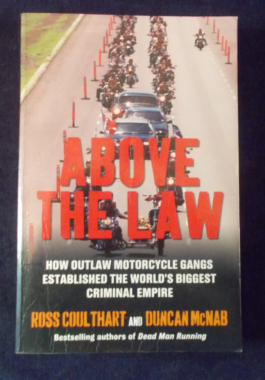 A forensic examination of the global future of organised crime - now being operated on a massive scale by outlaw motorcycle gang - and the difficulties faced by the Australian police in tackling the burgeoning crime empire that outlaw motorcycle gangs are developing in Australia and wherever else biker gangs flourish. It's a hard and chilling look at the global future of organised crime and reveals that the world's most successful criminal empire is now being operated on a massive scale by outlaw motorcycle gangs - an empire that is growing in power, reach and ruthlessness, far surpassing the threats posed by the Mafia, Russian syndicates, Chinese Triads and Japanese Yakuza. Outlaw motorcycle gangs are now being acknowledged as the greatest current organised crime threat with an international empire that is sophisticated, bloody and brutal. It is also both strategic and opportunistic - where they cannot dominate, they broker alliances. Here is how it all started: the turf wars that were fought, the deals that were done, and how the sea of cash that was earned is now being legitimised. It also reveals how law enforcement at an international level is losing the battle against the gangs. Using exclusive insider sources on four continents, this is the first contemporary account of one of the biggest criminal stories of our time.
A forensic examination of the global future of organised crime - now being operated on a massive scale by outlaw motorcycle gang - and the difficulties faced by the Australian police in tackling the burgeoning crime empire that outlaw motorcycle gangs are developing in Australia and wherever else biker gangs flourish. It's a hard and chilling look at the global future of organised crime and reveals that the world's most successful criminal empire is now being operated on a massive scale by outlaw motorcycle gangs - an empire that is growing in power, reach and ruthlessness, far surpassing the threats posed by the Mafia, Russian syndicates, Chinese Triads and Japanese Yakuza. Outlaw motorcycle gangs are now being acknowledged as the greatest current organised crime threat with an international empire that is sophisticated, bloody and brutal. It is also both strategic and opportunistic - where they cannot dominate, they broker alliances. Here is how it all started: the turf wars that were fought, the deals that were done, and how the sea of cash that was earned is now being legitimised. It also reveals how law enforcement at an international level is losing the battle against the gangs. Using exclusive insider sources on four continents, this is the first contemporary account of one of the biggest criminal stories of our time. -
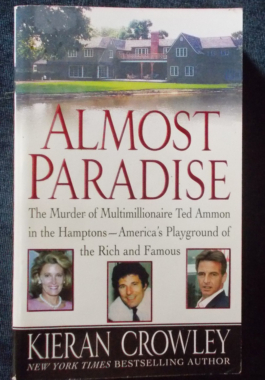 He was a multimillionaire but even his wealth and power could not save him. On October 22, 2001, handsome multimillionaire financier Ted Ammon was found bludgeoned to death in the magnificent East Hampton mansion he'd built with his beautiful - and volatile - wife, Generosa. She stood to make millions, but it wasn't the money that made Ted's friends suspicious: Generosa Ammon had a history of violent outbursts and bizarre obsessions. A talented interior decorator, Generosa had fashioned a lavish lifestyle for her husband and their two children, divided between Fifth Avenue, the Long Island estate, and a manor house in England. But when Generosa discovered Ted had a mistress, her demons were unleashed and she began a very public affair with Danny Pelosi, a strikingly handsome womaniser who was also her electrician. She called him her "tool belt guy." But he was also an ex-con who was suspected of playing a pivotal role in Ted's murder and the final destruction of a once-perfect family. Illustrated with photographs.
He was a multimillionaire but even his wealth and power could not save him. On October 22, 2001, handsome multimillionaire financier Ted Ammon was found bludgeoned to death in the magnificent East Hampton mansion he'd built with his beautiful - and volatile - wife, Generosa. She stood to make millions, but it wasn't the money that made Ted's friends suspicious: Generosa Ammon had a history of violent outbursts and bizarre obsessions. A talented interior decorator, Generosa had fashioned a lavish lifestyle for her husband and their two children, divided between Fifth Avenue, the Long Island estate, and a manor house in England. But when Generosa discovered Ted had a mistress, her demons were unleashed and she began a very public affair with Danny Pelosi, a strikingly handsome womaniser who was also her electrician. She called him her "tool belt guy." But he was also an ex-con who was suspected of playing a pivotal role in Ted's murder and the final destruction of a once-perfect family. Illustrated with photographs. -

Jimmy Governor: Frank Clune
$30.00Jimmy Governor was born a half-caste and grew up to be a gentle, hard-working man. On December 10 1898, he committed the unpardonable sin of marrying a white woman. He and his wife, downgraded to the status of outcasts, became the targets of taunts, insults and bigotry from a society determined to undermine their dignity. Two years later, Jimmy Governor became a murderer. -
 Joseph Mengele, the camp doctor at Auschwitz, was personally responsible for the murder of nearly 400,000 people and for the torture of thousands more as part of his 'scientific' experiments. Yet he evaded capture for 40 years and it is only after the discovery of his body in a Brazilian cemetery, that his full story could be told. This investigative biography traces Mengele's roots and examines the forces that made him into a mass murderer and torturer; follows Mengele the fugitive after his flight from Auschwitz and looks at the conspiracy in Germany and Latin America that saved Mengele from justice. This is not only an exposé of Mengele as the very embodiment of evil and the system that spawned him; it is also an explanation of the many 'ordinary' people who shielded and sustained the monster to the grave and beyond. Illustrated with black and white photos.
Joseph Mengele, the camp doctor at Auschwitz, was personally responsible for the murder of nearly 400,000 people and for the torture of thousands more as part of his 'scientific' experiments. Yet he evaded capture for 40 years and it is only after the discovery of his body in a Brazilian cemetery, that his full story could be told. This investigative biography traces Mengele's roots and examines the forces that made him into a mass murderer and torturer; follows Mengele the fugitive after his flight from Auschwitz and looks at the conspiracy in Germany and Latin America that saved Mengele from justice. This is not only an exposé of Mengele as the very embodiment of evil and the system that spawned him; it is also an explanation of the many 'ordinary' people who shielded and sustained the monster to the grave and beyond. Illustrated with black and white photos. -
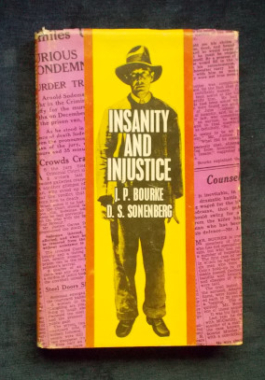 The case of Arnold Karl Soderman is one of the most remarkable in the criminal annals of 20th century Australia. No matter what angle - legal, medical or from the layman's point of view - it presents startling drama and raises challenging questions. The macabre story of the killing of four young children, one only six years old; the tragedy of two men charged with the crimes of which they were guiltless; the situation of a father confronted with an unfounded allegation of the ferocious murder of his daughter; the spectacle of honest witnesses mistakenly testifying as to the identity of an accused man so as to bring the object of their accusations within the shadow of the gallows; the fight for the life of the killer through the hierarchy of the Australian Court System up to the Privy Council; the decision to hang the accused, declared by two government doctor and another highly qualified psychiatrist to have been insane at the time of the killings; and the carrying out of the sentence all combine to make a story which calls for the telling. Co-author J.P. Bourke was Counsel for the Defence in this case 1935-1936
The case of Arnold Karl Soderman is one of the most remarkable in the criminal annals of 20th century Australia. No matter what angle - legal, medical or from the layman's point of view - it presents startling drama and raises challenging questions. The macabre story of the killing of four young children, one only six years old; the tragedy of two men charged with the crimes of which they were guiltless; the situation of a father confronted with an unfounded allegation of the ferocious murder of his daughter; the spectacle of honest witnesses mistakenly testifying as to the identity of an accused man so as to bring the object of their accusations within the shadow of the gallows; the fight for the life of the killer through the hierarchy of the Australian Court System up to the Privy Council; the decision to hang the accused, declared by two government doctor and another highly qualified psychiatrist to have been insane at the time of the killings; and the carrying out of the sentence all combine to make a story which calls for the telling. Co-author J.P. Bourke was Counsel for the Defence in this case 1935-1936 -
 On April 4th, 1968, Dr. Martin Luther King, Jr. stepped out onto the balcony of the Lorraine Motel in Memphis, Tennessee, and into his killer's line of fire. One shot ended Dr. King's life and forever changed the course of American history - setting into motion a massive cover-up that has withstood a quarter-century of scrutiny. Now, after 18 years of intensive investigation, William F. Pepper tears away the veil of subterfuge that has hidden the truth of King's death - proving the innocence of convicted assassin James Earl Rayand revealing the cabal of government leaders and organised crime figures that masterminded the assassination of one of the most influential leaders of our age. The author was an associate of Dr. King and executive director of the independent political coalition that hoped to put King forward as a third party presidential candidate in 1968. After the murder, Pepper walked away from politics. But in 1977. Reverend Ralph Abernathy asked Pepper to interview James Earl Ray. Initially sceptical, Pepper became convinced that Ray was innocent of the crime and that Ray had always claimed, he had been manipulated by a man named Raul and was the victim of a set-up. But who was behind the set-up - and why?
On April 4th, 1968, Dr. Martin Luther King, Jr. stepped out onto the balcony of the Lorraine Motel in Memphis, Tennessee, and into his killer's line of fire. One shot ended Dr. King's life and forever changed the course of American history - setting into motion a massive cover-up that has withstood a quarter-century of scrutiny. Now, after 18 years of intensive investigation, William F. Pepper tears away the veil of subterfuge that has hidden the truth of King's death - proving the innocence of convicted assassin James Earl Rayand revealing the cabal of government leaders and organised crime figures that masterminded the assassination of one of the most influential leaders of our age. The author was an associate of Dr. King and executive director of the independent political coalition that hoped to put King forward as a third party presidential candidate in 1968. After the murder, Pepper walked away from politics. But in 1977. Reverend Ralph Abernathy asked Pepper to interview James Earl Ray. Initially sceptical, Pepper became convinced that Ray was innocent of the crime and that Ray had always claimed, he had been manipulated by a man named Raul and was the victim of a set-up. But who was behind the set-up - and why? -
 Ron Williamson was a star college sportsman in the small town of Ada, Oklahoma. When he left to pursue his dreams he seemed destined for glory. But years of injury, drinking, drugs and women took their toll, and he returned to Ada a lonely drifter. Soon after his homecoming, a local cocktail waitress was raped and murdered. With no immediate leads, the police worked the case for five years before arresting Williamson and charging him with her murder. Despite no physical evidence, and based largely on the testimony of jailhouse snitches, he was found guilty at trial and sent to death row. Left to await his fate, Williamson was the only person to know the terrible truth: that an innocent man had been sent on a journey to hell. A journey from which he might never return...Illustrated with black and white photographs.
Ron Williamson was a star college sportsman in the small town of Ada, Oklahoma. When he left to pursue his dreams he seemed destined for glory. But years of injury, drinking, drugs and women took their toll, and he returned to Ada a lonely drifter. Soon after his homecoming, a local cocktail waitress was raped and murdered. With no immediate leads, the police worked the case for five years before arresting Williamson and charging him with her murder. Despite no physical evidence, and based largely on the testimony of jailhouse snitches, he was found guilty at trial and sent to death row. Left to await his fate, Williamson was the only person to know the terrible truth: that an innocent man had been sent on a journey to hell. A journey from which he might never return...Illustrated with black and white photographs. -
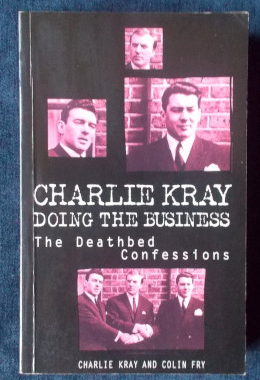 Until the release of this book, no-one had ever revealed the truth about the Krays. Gossip and rumour have been rife, fact has blended into fiction. Only one man knew everything about the fearsome twins, but the law of the streets dictated that he kept it all a secret. Before his death. Charlie Kray revealed everything to his co-writer Colin Fry. He wanted to set the record straight once and for all. He made his deathbed confessions, revealing the in credible truth about the Kray Firm. Mixing their peculiar blend of glamour and terrifying violence, this is the final great story of the Krays - told by the man who knew them best. Illustrated with black and white photographs. https://cosmiccauldronbooks.com.au/p/frances-kray-tragic-bride-jacky-hyams/
Until the release of this book, no-one had ever revealed the truth about the Krays. Gossip and rumour have been rife, fact has blended into fiction. Only one man knew everything about the fearsome twins, but the law of the streets dictated that he kept it all a secret. Before his death. Charlie Kray revealed everything to his co-writer Colin Fry. He wanted to set the record straight once and for all. He made his deathbed confessions, revealing the in credible truth about the Kray Firm. Mixing their peculiar blend of glamour and terrifying violence, this is the final great story of the Krays - told by the man who knew them best. Illustrated with black and white photographs. https://cosmiccauldronbooks.com.au/p/frances-kray-tragic-bride-jacky-hyams/ -
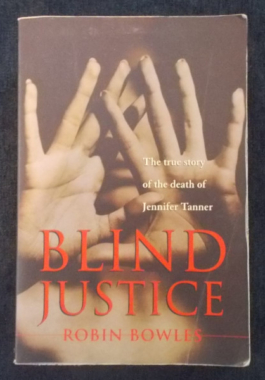 In 1996 Robin Bowles, a Melbourne company director, read a newspaper report about a task force that had been set up to re-investigate the circumstances surrounding the alleged suicide of Victorian country housewife Jennifer Tanner.The reason for the renewed interest was the the discovery of human remains in a mineshaft near the property where Jenny had died. Deeply puzzled by the mass of anomalies in the case, Robin went searching for answers. How, for instance, could Jenny have shot herself twice in the brain- after shooting both her hands first? Since there was no note nor proof of intention, could the findings from the original post-mortem have been influenced by other parties? And was Jenny's death connected to the body in the mine? What unfolds is a bizarre tangle of police bungles, cover-ups and family intrigue.
In 1996 Robin Bowles, a Melbourne company director, read a newspaper report about a task force that had been set up to re-investigate the circumstances surrounding the alleged suicide of Victorian country housewife Jennifer Tanner.The reason for the renewed interest was the the discovery of human remains in a mineshaft near the property where Jenny had died. Deeply puzzled by the mass of anomalies in the case, Robin went searching for answers. How, for instance, could Jenny have shot herself twice in the brain- after shooting both her hands first? Since there was no note nor proof of intention, could the findings from the original post-mortem have been influenced by other parties? And was Jenny's death connected to the body in the mine? What unfolds is a bizarre tangle of police bungles, cover-ups and family intrigue. -
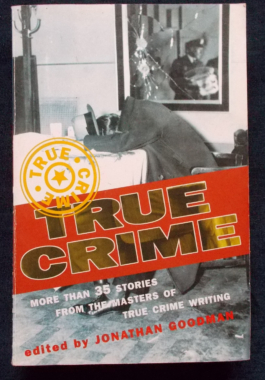 More than 35 accounts of notorious cases and lurid curiosities from the history of crime, described by criminology's most distinguished authors. In this volume: The murder of John Lennon; The rise and fall of Al Capone; The pathologist's account in the Nilsen case; Damon Runyan at a gangster's trial; Edgar Wallace at the scene of a crime; Abraham Lincoln's assassination; A hanging judge's diary; the death of Jesse James; The guillotining of Henri Landru; Jack the Ripper's real identity; W.M. Thackery: On Going To A Hanging; James Turber on a Broadway Gambler's demise; Edmund Pearson's Notes For Murderesses; the first electrocution at Sing Sing - and more.
More than 35 accounts of notorious cases and lurid curiosities from the history of crime, described by criminology's most distinguished authors. In this volume: The murder of John Lennon; The rise and fall of Al Capone; The pathologist's account in the Nilsen case; Damon Runyan at a gangster's trial; Edgar Wallace at the scene of a crime; Abraham Lincoln's assassination; A hanging judge's diary; the death of Jesse James; The guillotining of Henri Landru; Jack the Ripper's real identity; W.M. Thackery: On Going To A Hanging; James Turber on a Broadway Gambler's demise; Edmund Pearson's Notes For Murderesses; the first electrocution at Sing Sing - and more. -
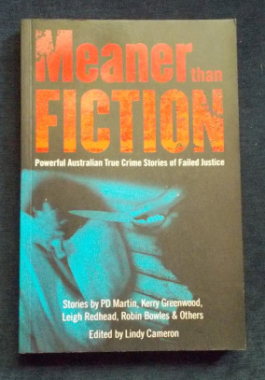 Just where is justice in Australia hiding? This brilliant new collection of true crime stories takes us into the Australian courts of the 1980s and '90s, back in time to the goldfields of the 1860s, and out to the island nation of Nauru in 2006 to explore how the scales of justice are unbalanced. This is a world in which the innocent still get locked up and the guilty too often go free. This collection is a must for all lovers of true crime. It will shock, outrage and intrigue. Features: Robin Bowles charts a mysterious case of sudden death; Lindy Cameron on the random shooting of Dr Andrew Taylor; Kathryn Deans on Heather Osland and how 13 years of torture was just the start of her ordeal; Liz Filleul on the disappearance of Elisabeth Membrey; Kerry Greenwood examines the role that crime writers have played in redressing miscarriages of justice; PD Martin on the Innocence Project, and Andrew Mallard; Susan Metcalfe on the tragedy of two Iraqis left behind on Nauru; Leigh Redhead asks how a man who secretly filmed his flatmates got away with it; Shelley Robertson, a modern forensic pathologist, questions the 'whole truth' of expert testimony; and Lucy Sussex on the unfortunate author Mary Fortune.
Just where is justice in Australia hiding? This brilliant new collection of true crime stories takes us into the Australian courts of the 1980s and '90s, back in time to the goldfields of the 1860s, and out to the island nation of Nauru in 2006 to explore how the scales of justice are unbalanced. This is a world in which the innocent still get locked up and the guilty too often go free. This collection is a must for all lovers of true crime. It will shock, outrage and intrigue. Features: Robin Bowles charts a mysterious case of sudden death; Lindy Cameron on the random shooting of Dr Andrew Taylor; Kathryn Deans on Heather Osland and how 13 years of torture was just the start of her ordeal; Liz Filleul on the disappearance of Elisabeth Membrey; Kerry Greenwood examines the role that crime writers have played in redressing miscarriages of justice; PD Martin on the Innocence Project, and Andrew Mallard; Susan Metcalfe on the tragedy of two Iraqis left behind on Nauru; Leigh Redhead asks how a man who secretly filmed his flatmates got away with it; Shelley Robertson, a modern forensic pathologist, questions the 'whole truth' of expert testimony; and Lucy Sussex on the unfortunate author Mary Fortune. -
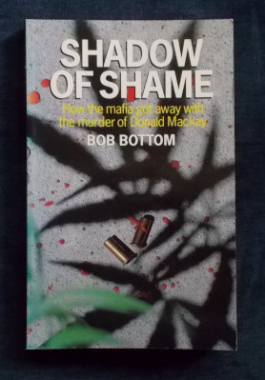
Shadow Of Shame: Bob Bottom
$12.00Donald Bruce MacKay, the Griffith anti-drugs campaigner, disappeared without trace from the carpark of the Griffith Hotel in July 1977. Mackay had been a secret informant for polce against illicit growing of marijuana growing in the Riverina area. His ‘disappearance’ became Australia’s first political assassination. This is the shocking story of how the mafia planned and executed his murder. Throughout the shameful decade that followed, some people, even at senior levels of politics and law enforcement, connived to cover up this mafia murder. Bob Bottom, a crime journalist, traces the birth and growth of the mafia in Griffith, known to police as a centre for serious crime as early as the 1930s. By the 1970s, when Mackay first became concerned about illicit drug activities in his town, those controlling organised crime had become far more sophisticated. Bribery, corruption and pay-offs had become commonplace. Serious questions about NSW police investigations into Australia’s most notorious murder precipitated a special commission of enquiry – nine years later...Bottom also details how drug boss Robert Trimbole lived safely in Spain despite international police knowledge of his whereabouts and of the failure of Australian authorities to bring him to justice. Illustrated with black and white photographs. -
 Chapters include: Gangs And Gangsters: Al Capone, Frank Costello, Jo Adonis, the Messinas, the Krays and the Mafia; City Cases: Whitaker Wright, Lord Kylsant, Clarence Hatry, Horatio Bottomley, The Lynskey Tribunal, Ferdinand Lesseps, the Teapot Dome; Political Murders: Spencer Percival, the attempt on Lloyd George, John F. Kennedy, William McKinley, James A. Garfield, Abraham Lincoln, Rasputin, Mussoline and Mateotti; Kidnapping: Elizabeth Canning, the Lindbergh baby, James Cross, Pierre Laporte, Samuel Bronfman, Muriel McKay; Pleas Of Insanity: Lieutenant Holt, Colonel Rutherford, Ronald True, Dale Nelson, Leopold and Loeb, Harry Thaw; Sex Crimes: Alfred Whiteway, Edward Paisnel, Peter Griffiths, Patrick Byrne, Albert DeSalvo, Fritz Haarmann, Gaston Domincini; Cases Unsolved: Jack the Ripper, Mrs Caroline Luard.
Chapters include: Gangs And Gangsters: Al Capone, Frank Costello, Jo Adonis, the Messinas, the Krays and the Mafia; City Cases: Whitaker Wright, Lord Kylsant, Clarence Hatry, Horatio Bottomley, The Lynskey Tribunal, Ferdinand Lesseps, the Teapot Dome; Political Murders: Spencer Percival, the attempt on Lloyd George, John F. Kennedy, William McKinley, James A. Garfield, Abraham Lincoln, Rasputin, Mussoline and Mateotti; Kidnapping: Elizabeth Canning, the Lindbergh baby, James Cross, Pierre Laporte, Samuel Bronfman, Muriel McKay; Pleas Of Insanity: Lieutenant Holt, Colonel Rutherford, Ronald True, Dale Nelson, Leopold and Loeb, Harry Thaw; Sex Crimes: Alfred Whiteway, Edward Paisnel, Peter Griffiths, Patrick Byrne, Albert DeSalvo, Fritz Haarmann, Gaston Domincini; Cases Unsolved: Jack the Ripper, Mrs Caroline Luard. -
 The Goatfell Murder: Near the summit of Goatfell, the body of Edwin Robert Rose was found stuffed under a granite boulder on 28 July 1889. He was a 32-year-old builder's clerk from London who had last been seen alive on the mountain a fortnight before. His head and face had been brutally smashed, probably by rocks. The last person seen in his company, a 26-year-old engineering worker known as John Annandale, was nowhere to be found. Annandale's real name was John Watson Laurie, a pattern maker for a Glasgow locomotive firm. He was caught by police two months later and at the end of a two-day trial under an impatient judge he was found guilty of murder, despite the lack of forensic evidence or any witnesses to the deed. But was there a miscarriage of justice? The Ardlamont Mystery: Alfred John Monson began working as a gentleman's tutor for the Hambrough family in 1891. In 1893 he took the lease on the Ardlamont estate in Argyll for the shooting season. On 10 August he took Windsor Dudley Cecil Hambrough, his 20-year-old pupil, for a day's hunting in an area of woodland. A third man joined them, Edward Scott, a friend of Monson. Estate workers heard a shot, then saw Monson and Scott running to Ardlamont House carrying the guns. Monson alleged that Hambrough had shot himself in the head by accident while climbing a fence. But with very large insurance policies having been taken out less than a week before... John Donald Merrett: He was tried for the murder of his mother, Bertha Merrett. It was at first believed that she had committed suicide - but it was discovered that Merrett had been defrauding her. His defence was skilful and the Jury returned a verdict of "Not Proven". Not proven - but was he innocent? The Portencross Murder: Mary Gunn, her sister Jessie McLaren and her sister's husband Alex McLaren were enjoying a quiet evening at an isolated cottage when six shoots were fired. Jessie and Alex were wounded - but Mary was dead. The family lived quietly; and were considered to be 'well-off' in the locality. The only clues were six footprints, a few spent bullets and evidence that a stranger had been asking the way to Portencross...
The Goatfell Murder: Near the summit of Goatfell, the body of Edwin Robert Rose was found stuffed under a granite boulder on 28 July 1889. He was a 32-year-old builder's clerk from London who had last been seen alive on the mountain a fortnight before. His head and face had been brutally smashed, probably by rocks. The last person seen in his company, a 26-year-old engineering worker known as John Annandale, was nowhere to be found. Annandale's real name was John Watson Laurie, a pattern maker for a Glasgow locomotive firm. He was caught by police two months later and at the end of a two-day trial under an impatient judge he was found guilty of murder, despite the lack of forensic evidence or any witnesses to the deed. But was there a miscarriage of justice? The Ardlamont Mystery: Alfred John Monson began working as a gentleman's tutor for the Hambrough family in 1891. In 1893 he took the lease on the Ardlamont estate in Argyll for the shooting season. On 10 August he took Windsor Dudley Cecil Hambrough, his 20-year-old pupil, for a day's hunting in an area of woodland. A third man joined them, Edward Scott, a friend of Monson. Estate workers heard a shot, then saw Monson and Scott running to Ardlamont House carrying the guns. Monson alleged that Hambrough had shot himself in the head by accident while climbing a fence. But with very large insurance policies having been taken out less than a week before... John Donald Merrett: He was tried for the murder of his mother, Bertha Merrett. It was at first believed that she had committed suicide - but it was discovered that Merrett had been defrauding her. His defence was skilful and the Jury returned a verdict of "Not Proven". Not proven - but was he innocent? The Portencross Murder: Mary Gunn, her sister Jessie McLaren and her sister's husband Alex McLaren were enjoying a quiet evening at an isolated cottage when six shoots were fired. Jessie and Alex were wounded - but Mary was dead. The family lived quietly; and were considered to be 'well-off' in the locality. The only clues were six footprints, a few spent bullets and evidence that a stranger had been asking the way to Portencross... -
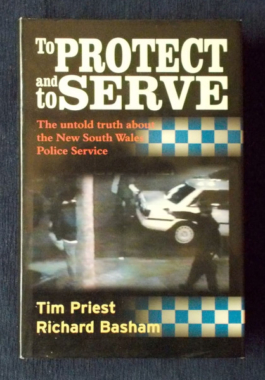 Almost every month in New South Wales, there are reports of police corruption and a police service under attack, from the criminals it tries to put away and the people it tries to protect and serve. Are the reports mere media sensationalism, or is the New South Wales Police in serious trouble? And if so, where did it go wrong? Priest was a cop who loved his job and gave everything he had to fight crime on the drug-ridden streets of Cabramatta. Yet he found his biggest battle was not with the drug gangs but with the very service he worked for. Eventually he could stand it no longer and spoke out about the bizarre policy decisions, politics, bureaucratic bungling and chronic lack of resources. For this he was labelled a whistle-blower and ultimately railroaded out of the police force. Yet a parlimentary enquiry and the testimony of other officers proved that Tim was not only telling the truth, but this was only the tip of the iceberg of what is really wrong with the New South Wales Police Force. While crime continues to spiral out of control, morale plummets among the rank and file police and experienced cops find they are at the mercy of a promotion system that leaves them nowhere to go but out. Tim teams up with Richard Basham, a man of vast experience through his involvement in a number of advisory boards, criminal investigations and personal friendships with ordinary cops, to reveal the untold story of the police service.
Almost every month in New South Wales, there are reports of police corruption and a police service under attack, from the criminals it tries to put away and the people it tries to protect and serve. Are the reports mere media sensationalism, or is the New South Wales Police in serious trouble? And if so, where did it go wrong? Priest was a cop who loved his job and gave everything he had to fight crime on the drug-ridden streets of Cabramatta. Yet he found his biggest battle was not with the drug gangs but with the very service he worked for. Eventually he could stand it no longer and spoke out about the bizarre policy decisions, politics, bureaucratic bungling and chronic lack of resources. For this he was labelled a whistle-blower and ultimately railroaded out of the police force. Yet a parlimentary enquiry and the testimony of other officers proved that Tim was not only telling the truth, but this was only the tip of the iceberg of what is really wrong with the New South Wales Police Force. While crime continues to spiral out of control, morale plummets among the rank and file police and experienced cops find they are at the mercy of a promotion system that leaves them nowhere to go but out. Tim teams up with Richard Basham, a man of vast experience through his involvement in a number of advisory boards, criminal investigations and personal friendships with ordinary cops, to reveal the untold story of the police service. -

Blood Stain: Peter Lalor
$15.00On 29 February 2000, Katherine Knight - mother of four, and a grandmother - seduced then stabbed John Price 37 times. A former abattoir worker, she skinned him. A loving partner, she cooked him with vegetables, making a soup with his head. She made gravy, and left him on plates for his family...Price was her de facto, and he wanted out. And Ketharine didn't like that...People said that most of the time Katherine seemed normal - until she got angry. She was judged to be legally sane when she committed a crime so horrible the media shied away from the details. Lalor covered the trial and wanted to know what made Knight go way over the borderline. He uncovers the layers of her dysfunction, opens the door of 84 St. Andrews Street and heads into the lives of Knight's ex-partners, her family and the locals of Aberdeen, New South Wales. Illustrated with colour photographs. -
 After fourteen years of marriage, Mel Jacob's life looked as perfect as the roses perched above her white picket fence. The nice house in the suburbs, two great kids, a good husband. Until...her seemingly saintly husband was jailed for two years. This recounts Mel's funny, moving and insightful journey as she navigates single parenthood, prison visitations and nosy neighbours...and tells of the family left behind: the grief, the stigma and the conversational minefields of her husband's whereabouts, as well as the logistical problems of making a baby sibling for her two children, and why it's not appropriate to tell people that Daddy's in jail. 'So why did you marry Dad?' my daughter asked. 'Well, over time I got to know him and he made me laugh, and - and I knew deep down that, that even though we were really different...he was a good person.' Without skipping a beat, she said, 'He's not that good, he's in jail!'.
After fourteen years of marriage, Mel Jacob's life looked as perfect as the roses perched above her white picket fence. The nice house in the suburbs, two great kids, a good husband. Until...her seemingly saintly husband was jailed for two years. This recounts Mel's funny, moving and insightful journey as she navigates single parenthood, prison visitations and nosy neighbours...and tells of the family left behind: the grief, the stigma and the conversational minefields of her husband's whereabouts, as well as the logistical problems of making a baby sibling for her two children, and why it's not appropriate to tell people that Daddy's in jail. 'So why did you marry Dad?' my daughter asked. 'Well, over time I got to know him and he made me laugh, and - and I knew deep down that, that even though we were really different...he was a good person.' Without skipping a beat, she said, 'He's not that good, he's in jail!'. -
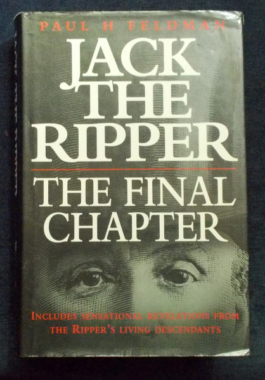 Feldman makes a convincing case for his suspect. His team spent a great deal of time, money and effort following leads in obscure documents, some of which had never been seen by anyone, to conclusively prove his theory. Illegitimate children, extra-marital affairs, high society, royal connections and a mysterious diary and a watch are just some of what came to light. Illustrated with black and white photographs.
Feldman makes a convincing case for his suspect. His team spent a great deal of time, money and effort following leads in obscure documents, some of which had never been seen by anyone, to conclusively prove his theory. Illegitimate children, extra-marital affairs, high society, royal connections and a mysterious diary and a watch are just some of what came to light. Illustrated with black and white photographs. -
 The courtrooms of the world have provided a stage for some of the most riveting human dramas ever told. Tension and conflict are the essence of a trial - sometimes with the threat of execution waiting at the end. Some of thee trials in this volume have changed the course of history, created new laws and have even introduced new words into the English Language: The Yorkshire Ripper; Charles I; Guy Fawkes; the Nuremberg trials and many more are featured, including the ever-popular and scandalous Profumo Affair. With black and white photographs.
The courtrooms of the world have provided a stage for some of the most riveting human dramas ever told. Tension and conflict are the essence of a trial - sometimes with the threat of execution waiting at the end. Some of thee trials in this volume have changed the course of history, created new laws and have even introduced new words into the English Language: The Yorkshire Ripper; Charles I; Guy Fawkes; the Nuremberg trials and many more are featured, including the ever-popular and scandalous Profumo Affair. With black and white photographs. -
 Like the Beaumont children and the Azaria Chamberlain cases before it, the backpacker murder case in Belanglo State Forest has entered Australian criminal folklore. Seven young people, most of them foreigners backpacking around Australia, brutally murdered, their remains uncovered in 1992 and 1993. It would take scores of police over three years, countless hours of forensic investigation, thousands of false leads and a few precious clues to charge and convict Ivan Milat for their horrific deaths. This is the definitive work on Ivan Milat, his family and the murders. Almost four years in the making, informed by exclusive interviews with members of the Milat family, key police investigators and Crown lawyers, this book reveals a family culture so bizarre it would lead inexorably to murder. It also scrutinises the police investigation – its remarkable success and failures, the dramatic turning point and the backbiting and bitterness that followed Milat's arrest. Thought-provoking, totally unsalacious and an exploration of the darker side of Australian life as a whole. Photographic illustrations.
Like the Beaumont children and the Azaria Chamberlain cases before it, the backpacker murder case in Belanglo State Forest has entered Australian criminal folklore. Seven young people, most of them foreigners backpacking around Australia, brutally murdered, their remains uncovered in 1992 and 1993. It would take scores of police over three years, countless hours of forensic investigation, thousands of false leads and a few precious clues to charge and convict Ivan Milat for their horrific deaths. This is the definitive work on Ivan Milat, his family and the murders. Almost four years in the making, informed by exclusive interviews with members of the Milat family, key police investigators and Crown lawyers, this book reveals a family culture so bizarre it would lead inexorably to murder. It also scrutinises the police investigation – its remarkable success and failures, the dramatic turning point and the backbiting and bitterness that followed Milat's arrest. Thought-provoking, totally unsalacious and an exploration of the darker side of Australian life as a whole. Photographic illustrations. -
 The criminals who ended their days in Strangeways Prison - and the crimes that sent them there. A collection of murder cases from around Manchester each of which ends in the accused being executed at Strangeways Prison. Some of the accounts, at the end, feature an author's note in which suggests that perhaps the accused was innocent and should not have been hanged...Many a lot of these crimes are particularly shocking, evil and unmotivated. There is also a first-hand account written by Charles Parton, who was sentenced to death for murder and served 11 years before being found not guilty.
The criminals who ended their days in Strangeways Prison - and the crimes that sent them there. A collection of murder cases from around Manchester each of which ends in the accused being executed at Strangeways Prison. Some of the accounts, at the end, feature an author's note in which suggests that perhaps the accused was innocent and should not have been hanged...Many a lot of these crimes are particularly shocking, evil and unmotivated. There is also a first-hand account written by Charles Parton, who was sentenced to death for murder and served 11 years before being found not guilty. -
 They were a notorious gypsy family that seeped into their victims' lives like a deadly cancer. And they couldn't be stopped-- until one courageous woman took on the cases no one else would touch...The victims were elderly, well-to-do men and women who, due to their failing health, strength, and faculties, could be conned out of their fortunes by heinous neglect, abuse, and possibly even murder. The accused are several members of a ruthless family of Gypsies known for their cunning con-games and remarkable ability to extract large sums of money from their unwitting pawns. Investigator Fay Faron was determined to bring the culprits to justice - even when the authorities turned a blind eye to the Gypsies' crimes time and time again. Author Jack Olsen follows Fay Faron as she retraces every step of the Gypsy family and the crimes they stand accused of: moving in on their helpless prey, extorting money, signing the fortunes of elderly millionaires into their own names - and speeding up the death process with sadistic neglect, slow poison, and unspeakable cruelty. Illustrated with black and white photographs.
They were a notorious gypsy family that seeped into their victims' lives like a deadly cancer. And they couldn't be stopped-- until one courageous woman took on the cases no one else would touch...The victims were elderly, well-to-do men and women who, due to their failing health, strength, and faculties, could be conned out of their fortunes by heinous neglect, abuse, and possibly even murder. The accused are several members of a ruthless family of Gypsies known for their cunning con-games and remarkable ability to extract large sums of money from their unwitting pawns. Investigator Fay Faron was determined to bring the culprits to justice - even when the authorities turned a blind eye to the Gypsies' crimes time and time again. Author Jack Olsen follows Fay Faron as she retraces every step of the Gypsy family and the crimes they stand accused of: moving in on their helpless prey, extorting money, signing the fortunes of elderly millionaires into their own names - and speeding up the death process with sadistic neglect, slow poison, and unspeakable cruelty. Illustrated with black and white photographs. -
 The author took the unusual step of writing this book of case histories with the comments of children and young people who came before him in his capacity as a Childrens' Court magistrate. Some of the stories are horrifying and given without any 'glossing over' of the horror; some of the offences were committed by children, many against children but it is clear that everything possible was done to help the child become a member of the community again. These are stories of rape, drug addiction, perversion. incest, corruption, prostitution - and of children who deliberately committed offences to get to Court to settle their own problems. These children will haunt the reader - all innocent victims of parents, their environment, ignorance or predatory monsters. The title page contains a warning to parents...
The author took the unusual step of writing this book of case histories with the comments of children and young people who came before him in his capacity as a Childrens' Court magistrate. Some of the stories are horrifying and given without any 'glossing over' of the horror; some of the offences were committed by children, many against children but it is clear that everything possible was done to help the child become a member of the community again. These are stories of rape, drug addiction, perversion. incest, corruption, prostitution - and of children who deliberately committed offences to get to Court to settle their own problems. These children will haunt the reader - all innocent victims of parents, their environment, ignorance or predatory monsters. The title page contains a warning to parents... -
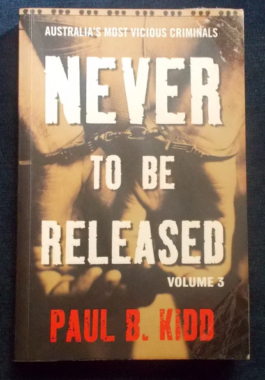 The third book in Kidd's chilling Never To Be Released series. Each year in Australia crimes are committed that are so evil their perpetrators are sentenced to the maximum punishment that the law allows. And seeing as there is no death penalty in any state of Australia, these worst-of-the-worst are sent to prison for life without the possibility of parole. It is termed 'never to be released'. To date, no criminal who has ever been handed down this sentence has been set free; they will die in jail as the law demands. But the fear of going to prison forever obviously does little to deter people from committing crimes of the most heinous nature. Kidd, a recognised authority on Australia's serial killers and criminals, looks at such cases as: the housewife who skinned her de-facto husband, cooked his head in a pot and served him up to his kids for dinner; a mild-mannered serial rapist and murderer who was so ordinary-looking that his victims trusted him immediately - time and time again; and a serial killer whose 'victim' turned up alive and well in the middle of his trial for her murder. Illustrated with black and white photographs.
The third book in Kidd's chilling Never To Be Released series. Each year in Australia crimes are committed that are so evil their perpetrators are sentenced to the maximum punishment that the law allows. And seeing as there is no death penalty in any state of Australia, these worst-of-the-worst are sent to prison for life without the possibility of parole. It is termed 'never to be released'. To date, no criminal who has ever been handed down this sentence has been set free; they will die in jail as the law demands. But the fear of going to prison forever obviously does little to deter people from committing crimes of the most heinous nature. Kidd, a recognised authority on Australia's serial killers and criminals, looks at such cases as: the housewife who skinned her de-facto husband, cooked his head in a pot and served him up to his kids for dinner; a mild-mannered serial rapist and murderer who was so ordinary-looking that his victims trusted him immediately - time and time again; and a serial killer whose 'victim' turned up alive and well in the middle of his trial for her murder. Illustrated with black and white photographs. -
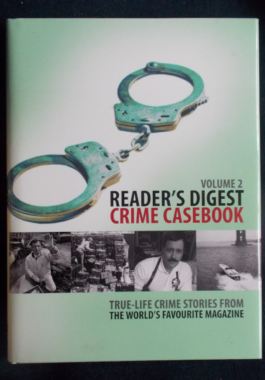 A cast of drug smugglers, serial killers, forensic boffins, ruthless gang leaders, dedicated detectives and ordinary citizens. Sixteen gripping accounts: in this volume: Tracking the Fox: Penetrating the world's leading marijuana smuggling ring. Zero Hour For The Zodiac: A strange twist of fate gave police a crucial lead. Terror At The Door: The ruthless gang had spread terror throughout southern England...they had to be caught before someone was killed. In The Footsteps Of Sherlock Holmes: Alphonse Lutringer had accidentally killed his wife and in a panic, burned her body parts in the basement. But how accidental had her death really been? Solved - The Mystery of Piltdown Man: It was the greatest scientific hoax of modern times - but who was behind it? Free To Kill: Two lives converged on a collision course...leading to a vicious crime and the death of a young girl. A Trap For Mr Untouchable: He was Europe's top drug trafficker and for five years he laughed in the faces of the police and Customs. The Murder Of Justice: The Florida cop and the 19 year-old street kid should never have met - but one night their paths crossed briefly with disastrous results. The Case Of The Missing Keys: With just one piece of vital evidence, the Manchester police could catch the killer - but the clue had vanished... Manhunt On The Heroin Road: The nickel-and-dime drug bust and routine investigation that led an investigator into the shadowy world of a sinister Chinese cartel. The Boy Who Never Came Home: The abduction of Jacob Wetterling took place over 30 years ago. Despite a massive search and investigation, no trace of him has ever been found. Hunted Like An Animal: The young American pushed his way though the dense Peruvian jungle, hunted by the men who had just killed his friend. A Cop's Life: Frankie McDonald was the black sheep of the family. No-one expected he would follow in the footsteps of his father and grandfather to become a New York City cop. If I Can't Have You, Nobody Will: Brian Anderson had stalked Laura Kucera for months - and now she was at his mercy. Who Wanted Aaron Dead? When Detective Jim Muchaud investigated the slaying of a teenager in his bedroom, clues led him to a shocking discovery. Terrorised By A Stalker: It could be your daughter, friend or workmate subjected to unwanted attention. Caution - she may be in danger...Illustrated with colour and black and white photographs.
A cast of drug smugglers, serial killers, forensic boffins, ruthless gang leaders, dedicated detectives and ordinary citizens. Sixteen gripping accounts: in this volume: Tracking the Fox: Penetrating the world's leading marijuana smuggling ring. Zero Hour For The Zodiac: A strange twist of fate gave police a crucial lead. Terror At The Door: The ruthless gang had spread terror throughout southern England...they had to be caught before someone was killed. In The Footsteps Of Sherlock Holmes: Alphonse Lutringer had accidentally killed his wife and in a panic, burned her body parts in the basement. But how accidental had her death really been? Solved - The Mystery of Piltdown Man: It was the greatest scientific hoax of modern times - but who was behind it? Free To Kill: Two lives converged on a collision course...leading to a vicious crime and the death of a young girl. A Trap For Mr Untouchable: He was Europe's top drug trafficker and for five years he laughed in the faces of the police and Customs. The Murder Of Justice: The Florida cop and the 19 year-old street kid should never have met - but one night their paths crossed briefly with disastrous results. The Case Of The Missing Keys: With just one piece of vital evidence, the Manchester police could catch the killer - but the clue had vanished... Manhunt On The Heroin Road: The nickel-and-dime drug bust and routine investigation that led an investigator into the shadowy world of a sinister Chinese cartel. The Boy Who Never Came Home: The abduction of Jacob Wetterling took place over 30 years ago. Despite a massive search and investigation, no trace of him has ever been found. Hunted Like An Animal: The young American pushed his way though the dense Peruvian jungle, hunted by the men who had just killed his friend. A Cop's Life: Frankie McDonald was the black sheep of the family. No-one expected he would follow in the footsteps of his father and grandfather to become a New York City cop. If I Can't Have You, Nobody Will: Brian Anderson had stalked Laura Kucera for months - and now she was at his mercy. Who Wanted Aaron Dead? When Detective Jim Muchaud investigated the slaying of a teenager in his bedroom, clues led him to a shocking discovery. Terrorised By A Stalker: It could be your daughter, friend or workmate subjected to unwanted attention. Caution - she may be in danger...Illustrated with colour and black and white photographs.





